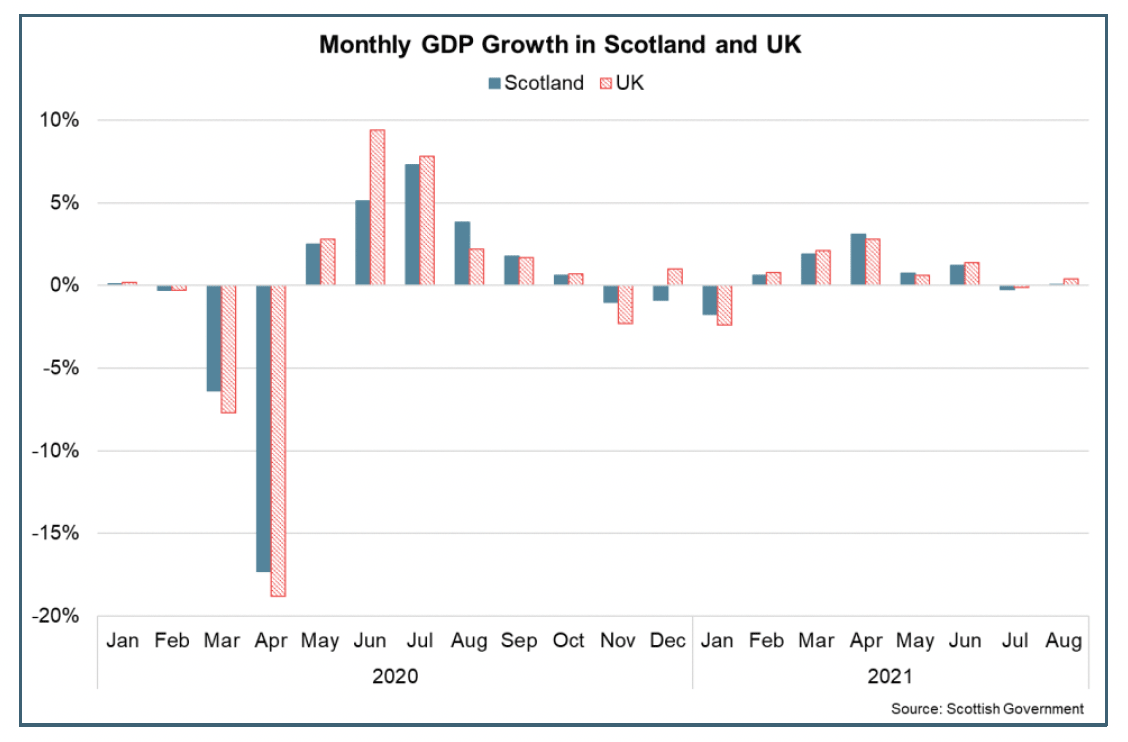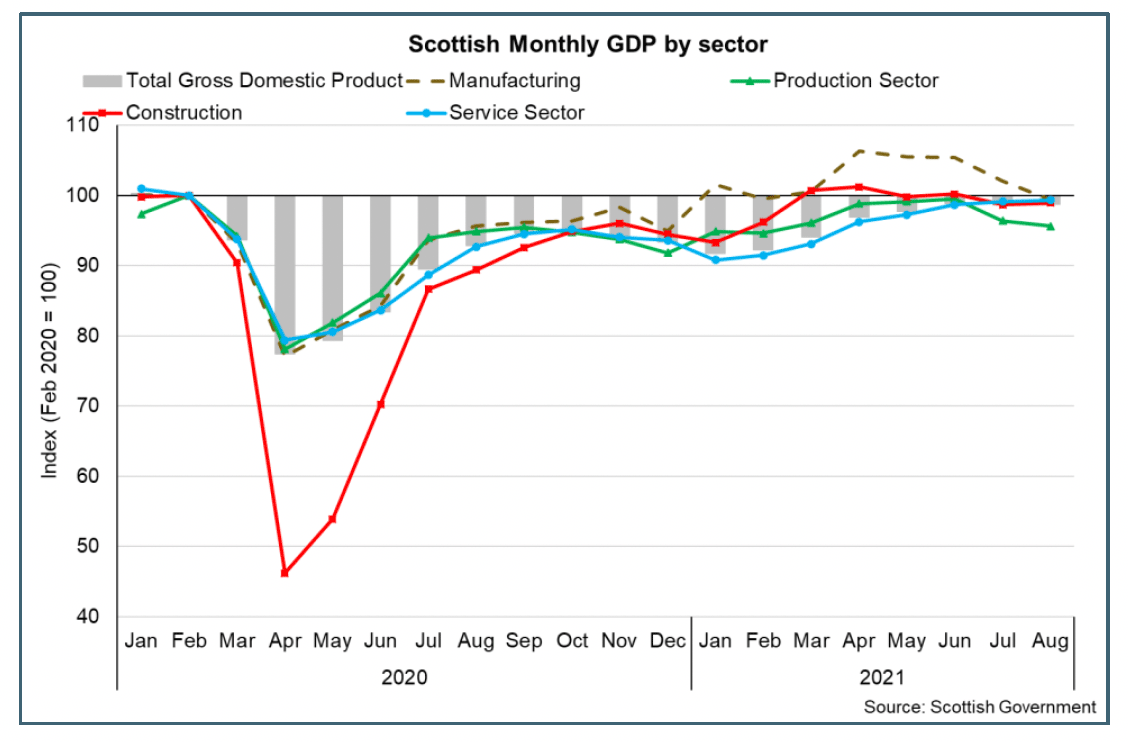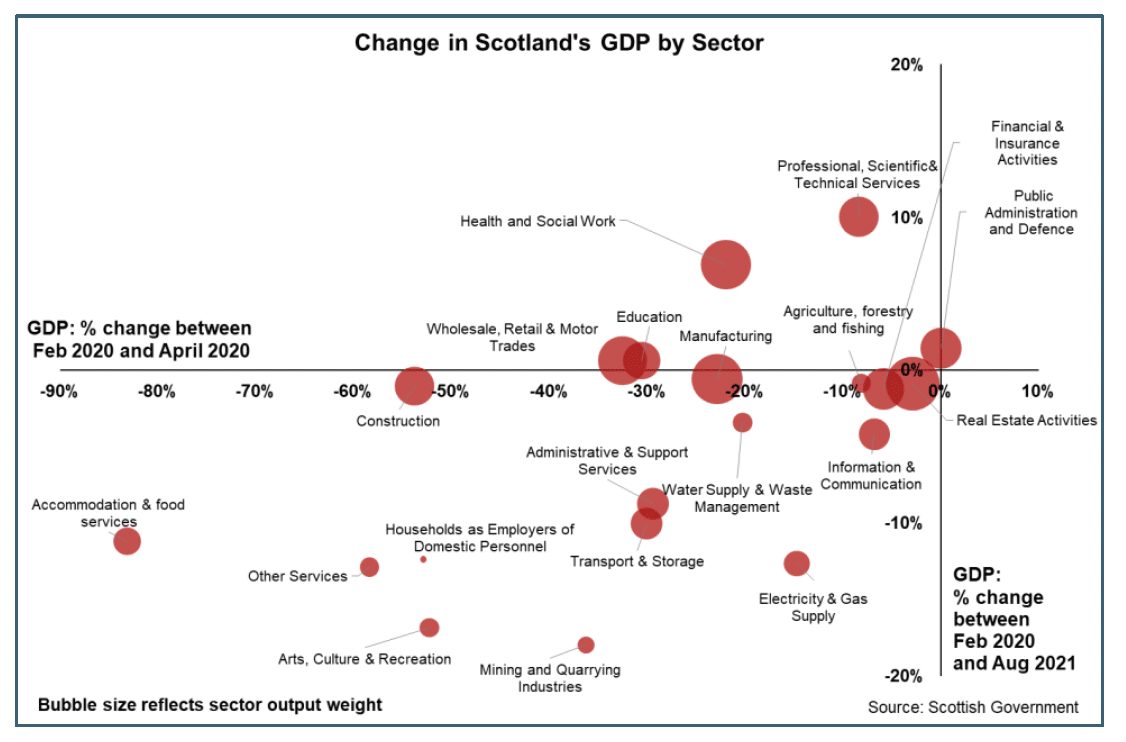State of the economy: November 2021
This report summarises recent developments in the global and Scottish economy and provides an analysis of the performance of, and outlook for, the Scottish economy.
Scottish Output
Scotland's GDP is continuing to recover back towards its pre-pandemic level, however the pace of growth has slowed during the third quarter of 2021.
The Scottish economy is continuing to recover from the significant impact on output that necessary restrictions on activity have had since the start of the pandemic. The latest GDP data for August reflects a period in which Scotland moved beyond level zero enabling the removal of most remaining restrictions on consumer facing sectors (with some protective measures remaining place).
While the pandemic is not yet over, this stage of the recovery marks a period for the first time since the start of the pandemic that the economy is adjusting to an environment largely without restrictions in place, although it continues to be influenced by legacy effects of past restrictions and imbalances in demand and supply which have emerged. At the same time, UK Government fiscal support has gradually been withdrawn, with the end of the furlough scheme and the temporary changes to VAT and Universal Credit.
Scotland's GDP grew 0.1% in August and is now 1.3% below pre-pandemic levels having fallen to 22.6% below in April 2020 at the start of the pandemic.[3]

The recovery in output in recent months has partly been driven by the easing of restrictions on some consumer facing parts of the services sector, enabling a period of businesses reopening and rise in demand, while output in the manufacturing and construction sectors have faced intensifying challenges from supply chain disruption weighing on activity.

Services sector output grew 0.2% in August, its eighth consecutive month of growth and is 0.7% below its pre-pandemic level. There continued to be strong contributions to growth in August from accommodation and food services (8.7%) and arts, recreation and culture (6.7%) which continue to rebound from the easing of restrictions on their sectors over the spring and summer months.
Output across the production sector as a whole fell 0.8% in August, driven predominantly by a 2.6% fall in manufacturing output, its fourth consecutive month of falling output. Manufacturing output has now fallen back below it pre-pandemic level of output (-0.6%), having recovered to 6% above in April and in part reflects supply chain bottlenecks constraining economic activity in the sector.
There has been a similar pattern of activity in the construction sector in recent months which although it grew in August (0.2%), output has also fallen back below pre-pandemic levels (-1%) amid supply chain challenges in the sector.
Overall, in the three months to August, GDP grew 2.6%, down from 5.6% growth in the second quarter. This reflects that the most significant boost to consumer facing services from businesses reopening over the summer has eased and that supply chain disruptions have been affecting activity in the manufacturing and construction sectors.
Despite the robust levels of growth in recent months, consumer facing sectors such as accommodation and food (-11.2%) and arts culture and recreation (-16.8%) remain amongst sectors that are further below their pre-pandemic levels, reflecting the impacts of restrictions on the sectors over the course of the pandemic.

Output from some sectors across services and production are currently back above pre-pandemic levels. For example, professional, scientific and professional services (+10%) and wholesale, retail and motor trades (+0.6%).
Contact
Email: OCEABusiness@gov.scot
There is a problem
Thanks for your feedback